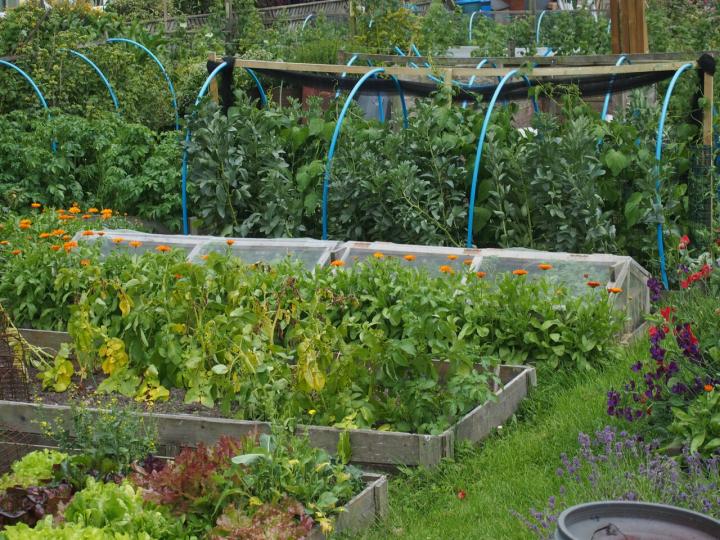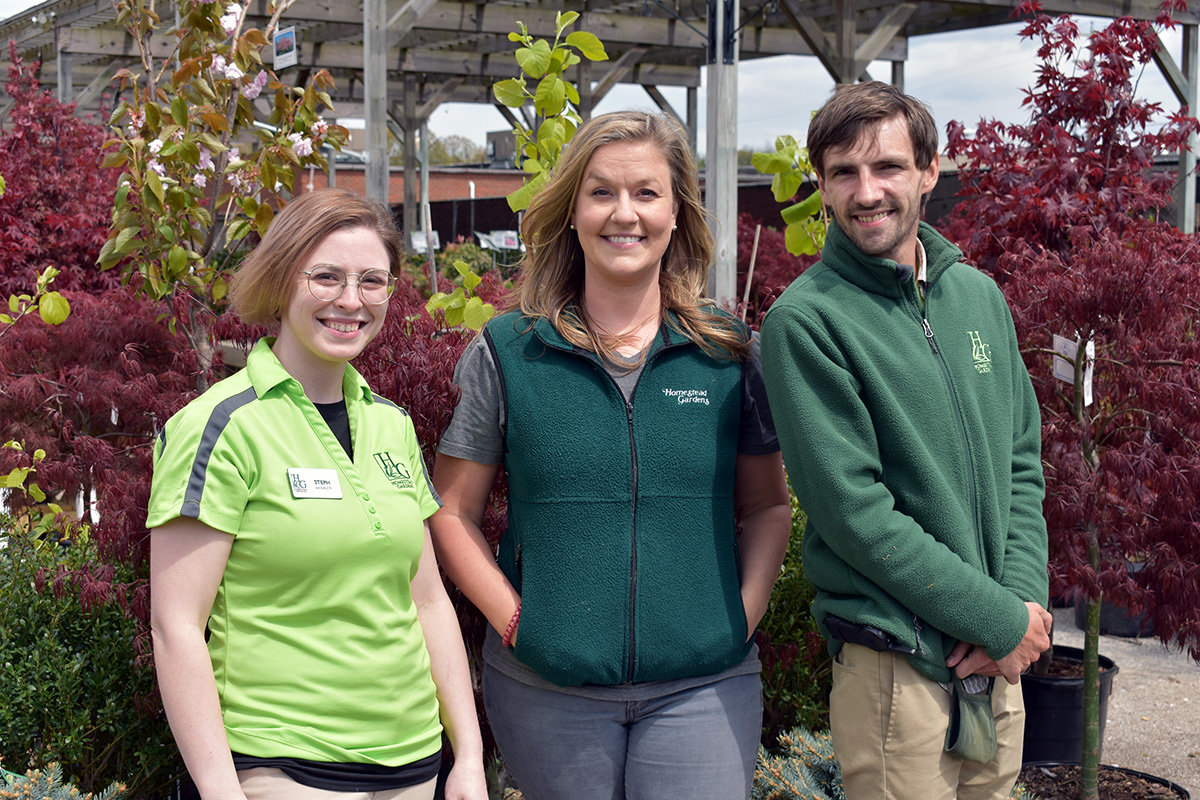Maximizing Yield in Homestead Gardening
Maximizing Yield in Homestead Gardening
Blog Article
Discover Crucial Tips for Successful Horticulture Techniques and Practices
By prioritizing crucial aspects such as dirt health, efficient sprinkling strategies, and ideal plant choice, garden enthusiasts can create a growing ecological community that supports lively development. Many fanatics neglect crucial information that can make or break their gardening success-- checking out these forgot elements may expose the key to growing a flourishing garden.
Understanding Soil Health
Dirt health is a fundamental aspect of successful horticulture, as it straight affects plant growth, vitamins and mineral accessibility, and ecological community equilibrium. Healthy and balanced dirt is defined by a rich biodiversity of microbes, natural matter, and a well balanced pH level, which with each other produce a setting helpful to plant development.
To understand soil wellness, one have to consider its physical, chemical, and biological residential properties. The appearance and framework of dirt impact its capacity to keep moisture and nutrients, while the chemical structure figures out the schedule of necessary elements like phosphorus, potassium, and nitrogen. Normal dirt testing is essential to analyze these elements, permitting garden enthusiasts to make educated choices concerning fertilizers and changes.
Furthermore, advertising organic task within the dirt is important for preserving its wellness. Practices such as composting, plant rotation, and the use of cover plants can boost microbial variety, boost nutrient biking, and reduce soil erosion. By prioritizing soil health, gardeners not only enhance plant development yet also add to a sustainable environment, making sure that their horticulture practices are eco responsible and resistant over time.
Effective Watering Methods
Making certain that plants get the proper quantity of water is crucial for their health and wellness and development, specifically when paired with a solid structure of dirt health and wellness (Homestead Gardening). Efficient sprinkling techniques can considerably influence plant vigor, minimizing water wastage and promoting ideal advancement
One fundamental technique is deep watering, which motivates origins to expand much deeper right into the dirt, enhancing dry spell resistance. This strategy normally includes sprinkling much less regularly yet in larger quantities, permitting moisture to permeate the root zone thoroughly. Timing is also vital; early morning is the optimal time to water, as it minimizes dissipation and enables foliage to completely dry throughout the day, decreasing condition risks.
Additionally, using mulch can aid retain dirt wetness and regulate temperature level, further aiding efficient sprinkling techniques. Utilizing a drip irrigation system can additionally give targeted wetness directly to the roots, ensuring that water reaches where it's most needed while saving resources.
Keeping an eye on rains and soil wetness degrees can lead adjustments in your watering timetable, guaranteeing plants get consistent hydration without over-saturation. By adopting these efficient sprinkling strategies, gardeners can promote a successful environment for their plants to flourish.
Plant Selection and Positioning
How can the appropriate plant choice and calculated placement change a yard into a prospering environment? When choosing plants, take into consideration elements such as environment, soil kind, and sunlight direct exposure. Homestead Gardening.
Strategic placement view website involves preparing plants according to their development behaviors and demands. Taller plants need to be positioned at the back of boundaries to avoid shielding much shorter plants. Additionally, organizing plants with comparable water and light needs can boost their growth and decrease competition for resources.
Integrating a variety of plants not only adds aesthetic allure however additionally advertises biodiversity, drawing in useful bugs and pollinators. Take into consideration the seasonal changes in your garden; pick a mix of perennials, evergreens, and annuals to ensure year-round rate of interest.
Finally, remember to examine the mature dimension of plants prior to planting to stay clear of congestion and make certain sufficient air blood circulation. Thoughtful plant selection and tactical placement develop a harmonious environment, allowing your garden to thrive while reducing challenges.
Bug and Condition Administration
Reliable parasite and condition administration is necessary for keeping a healthy yard ecosystem - Homestead Gardening. A positive strategy, incorporating social, organic, and chemical strategies, can dramatically lower the effect of parasites and diseases on your plants

Biological controls, such as presenting valuable bugs like ladybugs or aggressive mites, can keep bug populaces in check without hurting the setting. Furthermore, maintaining plant health via proper watering, fertilization, and pruning will reinforce their durability against conditions.
When intervention is necessary, choose targeted chemical therapies, making sure to comply with application guidelines to minimize harm to non-target organisms. Always focus on lasting techniques, as they advertise long-term yard wellness and eco-friendly equilibrium. By incorporating these approaches, gardeners can successfully manage parasites and illness, making certain growing plants and an effective yard.

Seasonal Upkeep Practices
Throughout each period, executing targeted upkeep methods is important for optimizing garden health and wellness and performance. In spring, focus on dirt preparation by screening pH degrees and adding essential amendments. This is also the excellent time to apply plant foods and compost to retain moisture and subdue weeds. On a regular basis evaluate emerging plants for diseases and bugs.
As summertime approaches, make certain appropriate watering while checking for indicators of stress and anxiety or illness. Prune back thick plants to urge air circulation and decrease moisture around vegetation. This technique not only improves plant health yet likewise advertises blooming and fruiting.
With the arrival of fall, it's time to plan for wintertime. Tidy up dropped leaves and debris to avoid insect problems, and take into consideration growing cover plants to improve soil wellness. This period is also suitable for splitting perennials and planting spring-flowering light bulbs.
Verdict
Effective gardening rest on the assimilation of sound practices in dirt health and wellness, watering, plant selection, bug administration, and seasonal upkeep. By focusing on soil screening and microbial variety, employing efficient watering strategies, and picking appropriate plants, gardeners can produce prospering communities. Additionally, positive bug monitoring and persistent seasonal maintenance add significantly to total garden vitality. Embracing these strategies promotes a lasting and efficient gardening environment, ensuring flourishing development and durability throughout the altering seasons.
By prioritizing crucial elements such as dirt health and wellness, reliable watering approaches, and proper plant choice, garden enthusiasts can develop a thriving community that sustains vibrant development. By focusing on dirt click over here now wellness, gardeners not just optimize plant growth however likewise add to a sustainable ecological community, guaranteeing that their gardening methods are ecologically responsible and resilient over time.
Taller plants need to be positioned at the back of borders to protect against shading shorter plants. Clean up fallen leaves and particles to avoid bug invasions, and take into consideration growing cover crops to enrich dirt health and wellness.Effective gardening hinges on the integration of sound practices in soil wellness, watering, plant choice, bug monitoring, and seasonal upkeep.
Report this page